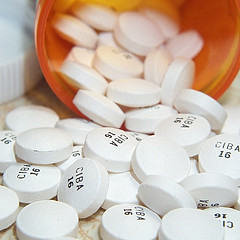 Even doctors can make mistakes when it comes to ADHD medication. As the parent of a healthcare consumer, you need to be smart, do your research and learn as much as you can about medication before you consider your child taking it.
Even doctors can make mistakes when it comes to ADHD medication. As the parent of a healthcare consumer, you need to be smart, do your research and learn as much as you can about medication before you consider your child taking it.
Some ADHD medications can cause severe side effects, including headaches, sleep problems, and decreased appetite. Not every type of medication will be suitable – sometimes the side effects outweigh the benefits, and it can be a case of trial and error to find the right ADHD medication for your child. So if your child is diagnosed with ADHD, make sure you educate yourself first.
Here are some basics that you need to know before you see your child’s consultant. Understanding more about ADHD medication and how it works means you’ll be better placed to find an effective treatment programme that minimizes ADHD symptoms and reduces side effects.
1. There are two major classes of stimulant medications: methylphenidate and dexamfetamine. Stimulant medications in the UK are Concerta XL, Equasym XL, Medikinet, Medikinet XL and Ritalin, and Elvanse, which is the only dexamfetamine medication available here.
There is also a non-stimulant medication available, atomoxetine, better known as Strattera. Each of the different types of medication can work for some ADHD patients but have no effect, or even have a negative effect, on others. Until you try them, there’s no way to predict how you’ll respond.
2. An optimal dosage of ADHD medication is not related to a person’s height or weight.
3. There is no “Average Starting Dose”. The level of medication your child will be started on depends on many factors, including their medical history, genetic differences, co-existing conditions, and the severity of their symptoms. The brain is complex, and results differ from person to person.
4. “We’ll increase the dosage to 10 mg in two weeks.” Just as a professional cannot predict which medication will work best, or at which starting dose, he also cannot predict an optimal dosage goal. The optimal dosage is identified by a method called titration: carefully increasing the dosage over time, until side effects outweigh benefits, and then dialing down to the previous dosage. The approach should always be “Start Low, Titrate Slow.”
5. Judging a medication’s effectiveness takes more than a doctor asking “So how’s that medication working out for you?” It requires monitoring the challenges your child faced before starting medication and regularly reviewing as treatment progresses, tracking improvements or side effects. During titration, experts recommend talking with your doctor weekly and scheduling in-office visits every three to four weeks – though this is not always possible.
6. The potential positive effects of medical treatment for ADHD shouldn’t be oversold. Some doctors will say you’ll see a huge improvement in your child’ symptoms right away and in some cases that does happen – but it doesn’t work for all patients. It’s true that some symptoms may improve dramatically in days, or even in hours. But it is important to wait to judge the full effect of the medication, because it can take some time for the full effects (or side effects) to be apparent.
7. Sleep problems among children with ADHD are multi-faceted, and poorly understood by some doctors, who may suggest switching from stimulant to non-stimulant medication if sleep problems seem to become worse. But in evaluating a stimulant’s apparent adverse effect on sleep, it’s important to pay attention to timing. Sleep problems could be the result of the rebound effect when the medication wears off, in which case taking the medication earlier in the day can help. Some people with ADHD sleep better when taking stimulant medication as it stops the “brain noise” and increases their ability to focus on going to sleep and staying asleep.
8. Does your child drink coffee or caffeine-based drinks? Some doctors says it’s okay to continue having caffeine as well as medication, but this doesn’t work for everyone. Some people can tolerate stimulants and still have some caffeine. For others, caffeine interferes with the medication by creating or exacerbating side effects, making it impossible to increase the stimulant to effective doses. You can’t determine what’s causing these side effects – it could be the stimulant or the caffeine.
9. Some physicians says patients with high blood pressure can’t take stimulants. It’s right that anyone with ADHD should have a thorough physical examination and have their blood pressure checked before beginning any new medication, and on a regular basis therafter. But the idea that hypertension precludes taking ADHD medication is a myth.
10. At some point it might seem like the medication has stopped working or is starting to be less effective – and your doctor might recommend trying something else. It could be the medication stops working for neurobiological reasons, or maybe you’ve just forgotten what life was like before your child started taking it. After a few weeks or months of experiencing the “novelty” of improved symptoms, it’s easy to forget how far your ADHD kids has come. Keeping written records of their progress is the best way to know if the med is still working.

